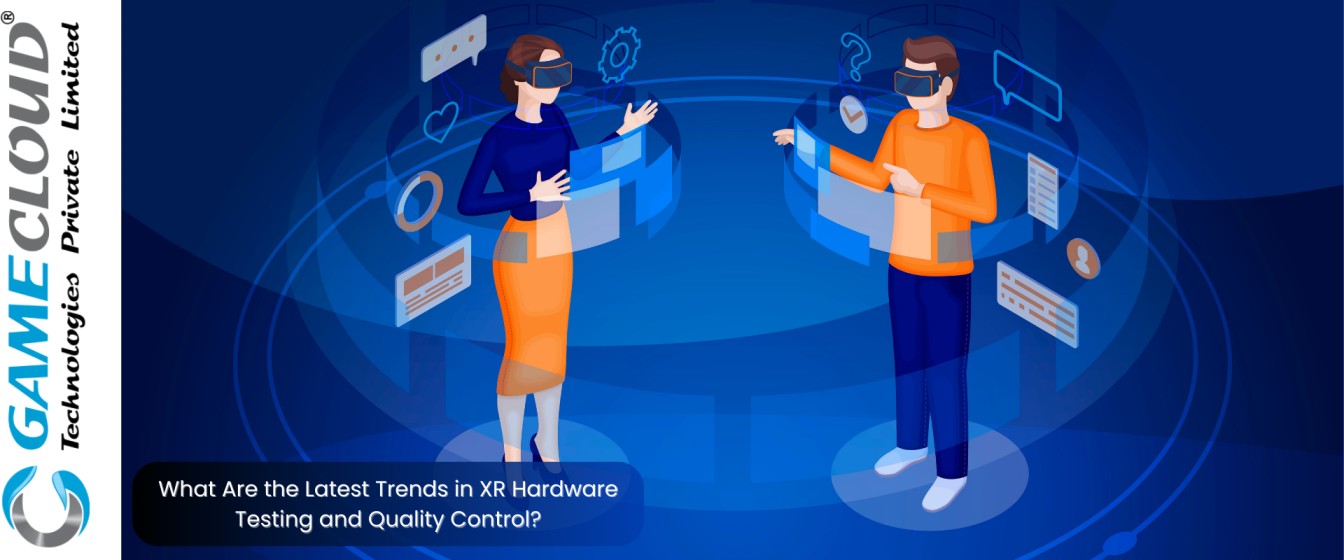
XR technology, encompassing VR, AR, and MR, is rapidly evolving, with applications spanning gaming, entertainment, IT and beyond. As XR hardware becomes more advanced, the importance of rigorous testing and quality control has grown significantly. Ensuring that XR devices deliver seamless and immersive experiences without glitches is crucial for their success in the market.
In recent years, the demand for robust testing methodologies has intensified due to the complexity of XR systems, which integrate multiple sensors, cameras, and processing units. The global XR market is expected to reach $105.58 billion in 2024, with a compound annual growth rate (CAGR) of 34.94% through 2029. This rapid growth underscores the need for precise quality control measures that can keep up with technological advancements.
Quality control in XR is now increasingly reliant on automation, AI, and machine learning to predict, monitor, and enhance product quality, minimizing human error and ensuring higher accuracy in the production process. As the XR industry continues to expand, so does the necessity for cutting-edge testing solutions that can guarantee the reliability and performance of these immersive technologies.
Emerging Trends in XR Hardware Testing
As XR technologies continue to advance, ensuring the reliability and quality of XR hardware has become increasingly critical. The latest trends in XR hardware testing reflect the need for more sophisticated and efficient methods to keep pace with rapid innovations.
Automation in Testing: Automation is revolutionizing XR hardware testing by introducing tools and frameworks that significantly boost efficiency and accuracy. These automated systems can handle complex and repetitive tasks, reducing the reliance on manual testing, which is often time-consuming and prone to errors. This shift towards automation ensures consistent quality control across all testing stages, enhancing the overall reliability of XR devices.
AI and Machine Learning: AI and Machine Learning are increasingly being integrated into XR testing processes. These technologies can predict potential issues by analyzing vast datasets, allowing testers to optimize coverage and focus on high-risk areas. This predictive capability reduces the likelihood of issues going unnoticed, ensuring a more robust final product.
Virtual Testing Environments: The creation of virtual testing environments is another significant trend. These environments simulate real-world conditions, allowing testers to evaluate XR hardware performance under various scenarios without needing physical prototypes. This approach not only saves time but also provides a more comprehensive understanding of how XR devices will function in the real world.
Wearable Device Testing: As wearable XR devices become more prevalent, there is a growing need for specialized testing procedures. These devices require thorough testing for factors such as comfort, durability, and user safety, making it essential to develop targeted testing methodologies that address these unique challenges.
Quality Control in the XR Industry
As XR technology becomes more integrated into various sectors, maintaining high standards of quality control is crucial to ensure reliability and user satisfaction. The industry is increasingly focusing on several key aspects of testing to address the unique challenges presented by XR hardware and applications.
UX Testing: As XR technologies continue to evolve, ensuring a seamless UX has become paramount. Developers are placing increased emphasis on UX testing to create intuitive and immersive interactions within XR applications. This focus helps to ensure that users can engage naturally with virtual environments, which is critical for widespread adoption and overall satisfaction.
Cross-Platform Compatibility: One of the significant challenges in the XR industry is achieving cross-platform compatibility. XR applications need to function consistently across a variety of devices, operating systems, and platforms. Ensuring this compatibility requires rigorous testing to identify and resolve issues that could disrupt the user experience when transitioning between different platforms.
Durability and Performance Testing: XR hardware must undergo extensive durability and performance testing to ensure it can withstand various conditions while maintaining optimal functionality. This includes testing for battery life and overall performance under different conditions, all of which are crucial for delivering reliable and long-lasting XR devices.
Quality Reality: Your Partner in Cutting-Edge XR Hardware Testing
At QualityReality, we are dedicated to delivering top-tier testing services for Metaverse and XR applications, along with quality control for traditional software and apps. Our mission is to empower developers of AR, VR, and MR experiences to provide the highest quality products to their users. We ensure that your apps and games are functional, compatible, and perform seamlessly across a diverse range of platforms, devices, and user categories.
Our rigorous testing and analysis help identify potential issues that could lead to negative user experiences, allowing us to develop strategies that minimize these risks. By optimizing the user experience, we ensure that your apps are accessible and enjoyable for all users.
Conclusion
Staying ahead with the latest trends in XR hardware testing and quality control is essential to ensure that devices and applications meet the increasing demands of users. As XR technology continues to evolve rapidly, incorporating advanced testing methodologies like automation, AI-driven insights, and rigorous quality assessments will be crucial in delivering reliable, high-performing products that offer seamless and immersive experiences.
